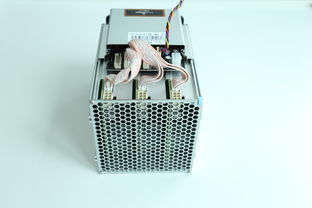Navigating the labyrinthine world of cryptocurrency mining can feel like charting unknown waters. With Bitcoin’s pioneering spirit still resonating, and the allure of Ethereum’s smart contracts and Dogecoin’s viral appeal beckoning, the quest for optimal mining strategies intensifies. But solo mining, with its demanding hardware and energy consumption, is increasingly becoming a relic of the past. This is where hosted mining emerges as a beacon, promising streamlined operations and reduced overhead. However, choosing the “best” hosted mining option requires a discerning eye and innovative strategies.
The foundational step lies in understanding the diverse landscape of hosted mining providers. Each boasts unique advantages, ranging from geographical location impacting energy costs (and therefore profitability), to specialized hardware configurations catering to specific cryptocurrencies. Some providers focus solely on Bitcoin (BTC), leveraging ASICs (Application-Specific Integrated Circuits) designed for its SHA-256 algorithm. Others may cater to Ethereum (ETH), offering GPU-based solutions before its transition to Proof-of-Stake, or exploring alternative Proof-of-Work coins. Still others might even offer Dogecoin (DOGE) mining options, though their profitability is often highly volatile and dependent on market sentiment.

A pivotal factor to consider is the provider’s infrastructure and security. A robust, well-maintained mining farm, equipped with advanced cooling systems and redundant power supplies, is paramount to maximizing uptime and minimizing downtime. Security is equally critical, safeguarding against cyber threats and physical intrusions. Scrutinize the provider’s security protocols, including data encryption, access controls, and disaster recovery plans. A provider with a proven track record of security and reliability is worth its weight in digital gold.
Beyond infrastructure, delve into the provider’s pricing structure. Hosting fees can vary significantly, often encompassing electricity costs, maintenance fees, and profit-sharing arrangements. Carefully analyze these fees to determine the true cost of mining and project your potential return on investment (ROI). Beware of providers with overly complex or opaque pricing models. Transparency and clarity are hallmarks of a reputable hosting service.
Furthermore, assess the provider’s customer support and communication channels. Mining can be a technically demanding endeavor, and timely, responsive support is essential for troubleshooting issues and resolving concerns. A provider that offers 24/7 support via multiple channels, such as phone, email, and live chat, demonstrates a commitment to customer satisfaction. Look for reviews and testimonials from other miners to gauge the provider’s responsiveness and helpfulness.
The choice of mining rig, whether it’s an ASIC miner for Bitcoin or a GPU-based rig for other cryptocurrencies, is also critical. Some hosting providers offer pre-configured mining rigs for rent, while others allow you to bring your own hardware. If you choose to bring your own rig, ensure that it is compatible with the provider’s infrastructure and that you understand the associated installation and maintenance procedures. Consider the energy efficiency of the rig, as this will directly impact your profitability.
Innovative strategies also involve actively monitoring market trends and adjusting your mining strategy accordingly. The cryptocurrency market is notoriously volatile, and the profitability of mining can fluctuate dramatically. Stay informed about changes in mining difficulty, cryptocurrency prices, and regulatory developments. Consider diversifying your mining portfolio by allocating resources to different cryptocurrencies or mining pools. This can help to mitigate risk and maximize your overall returns.
The evolution of Proof-of-Stake (PoS) consensus mechanisms, exemplified by Ethereum’s transition, necessitates adaptability. While PoW mining retains relevance for Bitcoin and other cryptocurrencies, exploring alternative strategies like staking or masternodes may prove beneficial. Diversifying your participation in the cryptocurrency ecosystem can insulate you from the potential decline in profitability of any single mining operation.

Ultimately, selecting the best hosted mining option is a multifaceted decision that requires careful consideration of numerous factors. By understanding the landscape of providers, scrutinizing their infrastructure and security, analyzing their pricing structures, assessing their customer support, optimizing your mining rig selection, and actively monitoring market trends, you can significantly increase your chances of success in the dynamic world of cryptocurrency mining.
Finally, don’t underestimate the power of community and networking. Engage with other miners, share insights, and learn from their experiences. Online forums, social media groups, and industry events can provide valuable opportunities for knowledge sharing and collaboration. The cryptocurrency community is known for its collaborative spirit, and by actively participating, you can gain a competitive edge in the pursuit of profitable mining.
This article explores cutting-edge approaches to hosted mining, blending technical insights with market trends. It highlights risk management, cost efficiency, and scalability, offering readers a nuanced perspective on optimizing returns in a volatile crypto landscape. Unexpected strategies spark fresh decision-making frameworks.